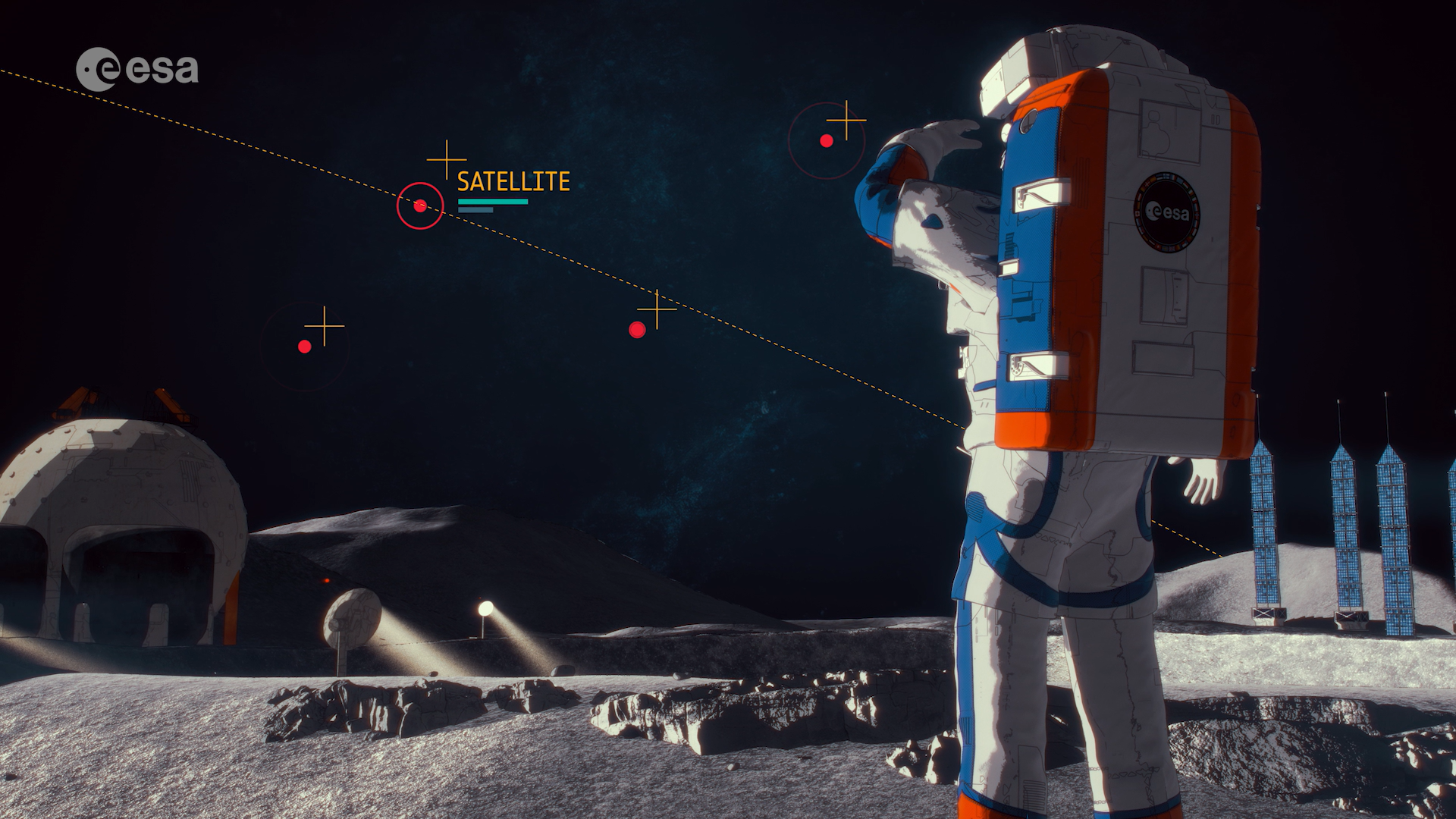ESA Navigation portfolio expanded and diversified by Ministerial Council
ESA’s Directorate of Navigation was pledged a total of €351 million by the Agency’s Member States during this week’s ESA Council at Ministerial Level on November 22 and 23. With this funding boost ESA sees its leading role in satellite navigation strengthened with a new programme FutureNAV, the continuation of its innovation programme NAVISP, and the kick-off of the Moonlight initiative for lunar telecommunications and navigation coverage.

“We’re very pleased to have received this level of support,” comments ESA Director of Navigation Javier Benedicto-Ruiz. “Beyond the baseline ESA membership contribution, the Agency’s budget operates on an à la carte basis, with Member States selecting which programmes to put money into. So the results from this Ministerial Council show that our proposals proved very well aligned with Member States’ priorities. This new budget will allow Europe to stay on the cutting-edge of satnav technology and to spur European competitiveness in what is today one of the largest downstream space market.”


Access the video
FutureNAV
The FutureNAV programme seeks to lead the way in responding to new satnav trends and concepts in an effective, agile way, applying hard-won European expertise in satellite navigation and broader Positioning, Navigation and Timing (PNT) technology. It will be composed of several missions to adequately respond to the rapidly growing needs for more ubiquitous, resilient, and reliable positioning, navigation and timing (PNT).
Initially, FutureNAV will support its first two missions. The first consists of an initial in-orbit demonstration, small constellation of Low-Earth-Orbit (LEO) navigation satellites, orbiting a few hundred kilometers up in space.

Operating added-value signals, these novel so-called ‘LEO-PNT’ satellites will test out a new multi-layer satnav system-of-systems approach to deliver seamless PNT services that are much more accurate, robust and available everywhere, supplementing Europe’s 23 222-km-distant Galileo satellites.
FutureNAV’s second mission is GENESIS, which will map the ever-shifting contours of planet Earth more accurately than ever before, down to the scale of a single millimeter, in the process improving multiple navigation and Earth science applications, including enhancing the precision of the Galileo navigation system.

GENESIS will achieve this by combining four main ‘geodetic’ or Earth-measuring technologies on a single platform for the first time: satnav will be combined with laser and radio-ranging, along with Very Long Baseline Interferometry – an astronomical technique originally conceived to observe far-distant stars, but reversed for precision Earth mapping.
“We conceived FutureNAV because we recognised that the excellent services already delivered by Global Navigation Satellite Systems, notably Galileo, open the door for ever growing and evolving needs in the domain of global mobility,” adds Philippe Michel, Head of the Strategy and Programme Department at the Directorate of Navigation. “So we are investigating additional innovative approaches to achieve the heightened performance levels required for future use cases such as assisted and automated driving, smart cities and the internet of things.


Access the video
NAVISP
“In parallel the extension of our NAVISP programme supports R&D work in combination with European industry and academia to foster innovations for the future of PNT, while also achieving commercial success in the global PNT market.”, adds Philippe Michel. “The continuation of NAVISP will allow ESA to foster innovative navigation technologies, notably for green and digital mobility, both on land and on sea.”
NAVISP, ESA’s Navigation Innovation and Support Programme, has already undertaken more than 200 innovative projects in the areas of satnav and more broadly PNT, as well as supporting Member States in their national research priorities, including national PNT test sites.

Moonlight
ESA’s navigation specialists are also involved in an ambitious attempt to extend satellite navigation and telecommunications coverage to the Moon through the multi-Directorate Moonlight initiative.
Fully supported during the Ministerial, the progressive development and deployment of Moonlight infrastructure around and on the Moon will serve multiple missions at once, making lunar exploration much more sustainable and ensuring that Europe plays a pioneering role in providing dedicated navigation and communication services to future lunar exploration. It will be as if the Moon has come closer, transformed into Earth’s eight continent rather than a far distant world.
More information or press enquiries:


Access the video














 Germany
Germany
 Austria
Austria
 Belgium
Belgium
 Denmark
Denmark
 Spain
Spain
 Estonia
Estonia
 Finland
Finland
 France
France
 Greece
Greece
 Hungary
Hungary
 Ireland
Ireland
 Italy
Italy
 Luxembourg
Luxembourg
 Norway
Norway
 The Netherlands
The Netherlands
 Poland
Poland
 Portugal
Portugal
 Czechia
Czechia
 Romania
Romania
 United Kingdom
United Kingdom
 Slovenia
Slovenia
 Sweden
Sweden
 Switzerland
Switzerland

























